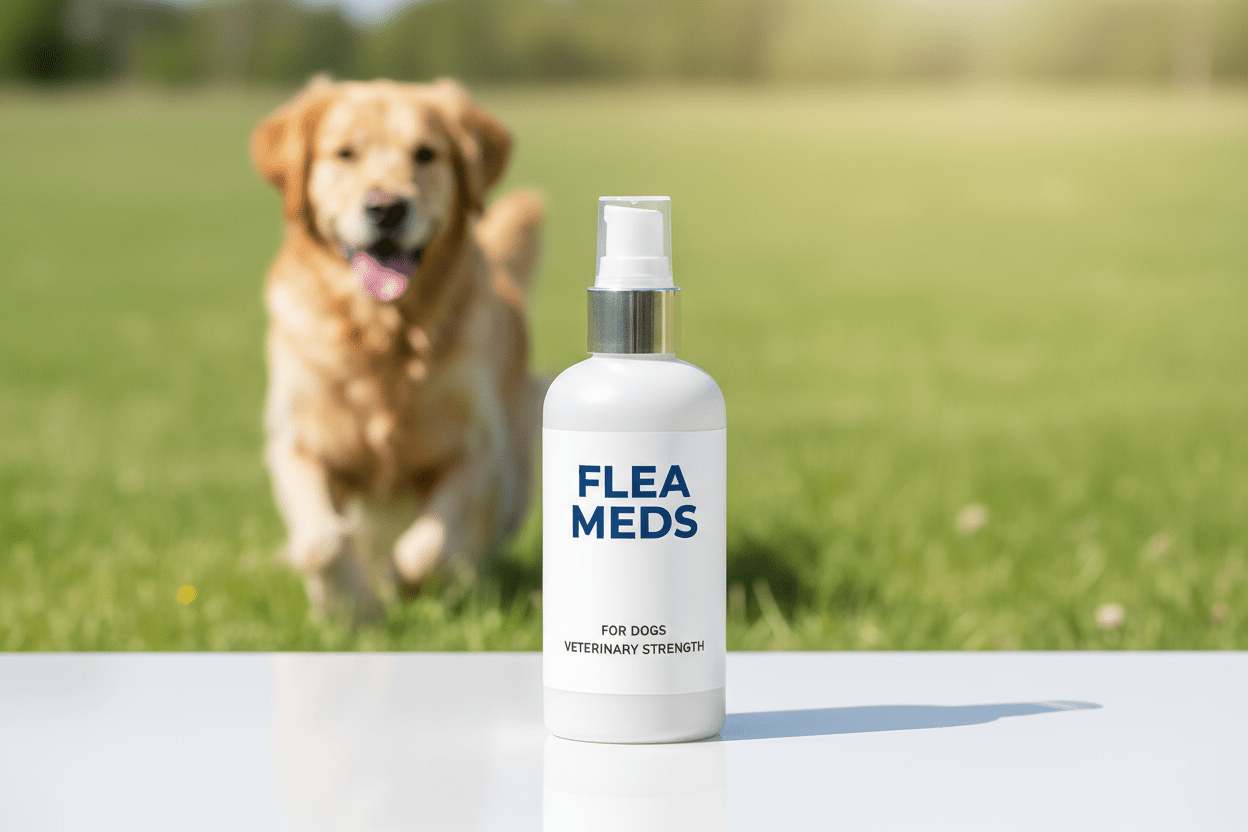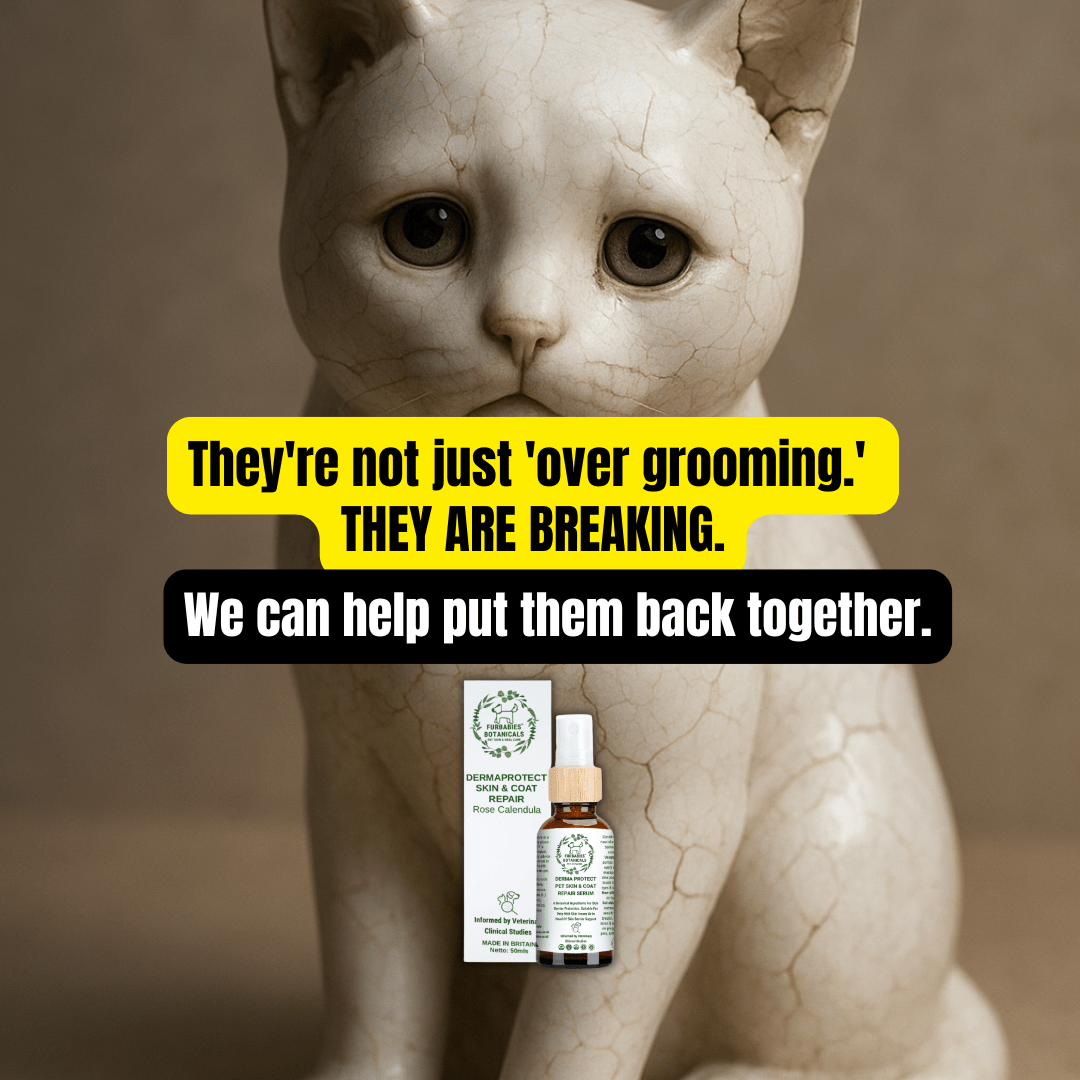What Should I Do?
Cat flea infestation is a persistent issue, and many pet parents find themselves frustrated when my cat still has fleas after treatment. If you've treated your cat but fleas keep coming back, it's essential to understand the flea life cycle and how to break it effectively.
The Flea Life Cycle and Persistent Infestations
To fully eliminate fleas, it's crucial to understand their life cycle:
- Egg Stage – Flea eggs on cats are laid in their fur, but they fall off into the environment. Eggs hatch in 2-21 days, depending on warmth and humidity.
- Larval Stages – Flea larvae go through three moults over 9-15 days, feeding on flea dirt on cats and organic matter in carpets, bedding, and furniture.
- Pupal Stage (Cocoon) – This stage is the toughest to eradicate. The cocoon can hatch in 1-2 weeks, but if conditions are unfavourable, it can remain dormant for up to a year, causing recurring infestations.
- Adult Flea – Fleas on cats symptoms include scratching and biting. Adult fleas jump onto your cat, feed on blood, and start laying eggs within 24-48 hours. They can live for several weeks or up to two months without a host in ideal conditions.
For more specific information on prescription only medicines used by vets read this: What Treatments Do Vets Use?
Our guide on holistic flea treatments, is a good read for those looking for alternative non-chemical routes for flea prevention.
Why Does My Cat Keep Getting Fleas?
Even after treatment, why does my cat keep getting fleas even after treatment? Fleas can persist due to various reasons:
- Flea eggs in the environment – Treatments often target adult fleas, but flea eggs on cats, larvae, and pupae remain in carpets, bedding, and furniture.
- Reinfestation from other pets – If you have a dog, why does my dog keep getting fleas? It could be due to fleas transferring between pets.
- Emerging fleas from pupae – Since pupae can stay dormant for months, you may see new adult fleas weeks after treatment.
- Ineffective or inconsistent treatment – Missing a dose or using an ineffective product allows fleas to survive and reproduce.
How to Tell If Your Dog or Cat Has Fleas
Wondering how to tell if cat has fleas? Look for these common signs:
- Flea dirt on cats – Black specks resembling ground pepper in their fur.
- Excessive scratching and biting – Especially around the neck, back, and tail.
- Hair loss or skin irritation – Due to flea allergies.
- Flea eggs on cats – Tiny white specks in the fur.
- Visible fleas – Particularly around the belly and armpits.
How to Get Rid Of Fleas Fast
Since dog or cat flea infestation progresses through multiple life stages, a multi-step approach is necessary:
1. Use a Comprehensive Flea Treatment
Ensure you're using a vet-recommended flea prevention that covers adult fleas, larvae, and eggs. Options include:
- Topical treatments
- Oral flea medications
- Flea collars
- Flea sprays
For the ultimate guide A-Z on all the types of flea, tick & worm medication click on this link here: Flea Treatment For Cats & Dogs
2. Treat Your Home for Fleas
Because if cat has fleas will they be in the house? Yes! Eggs and pupae hide in the environment, so thorough cleaning is essential:
- Vacuum all floors, rugs, and furniture daily to remove flea eggs on cats and larvae.
- Wash pet bedding and soft furnishings in hot water weekly.
- Use flea sprays or foggers designed for home use to eliminate pupae.
3. Check and Treat Other Pets
If you have a dog, ensure they are on flea prevention too. Why does my dog keep getting fleas? It could be due to reinfestation from the same environment.
4. Prevent Future Infestations
Fleas can remain dormant for months, so year-round prevention is key. Do indoor cats need flea prevention? Yes! How do cats get fleas? Fleas can enter homes on shoes, clothing, or visitors.
Step 1: Treat Your Cat with Effective Flea Treatment
Timeline:
-
Day 1: Apply flea treatment as per the manufacturer instructions.
- Topicals: Apply between the shoulder blades on the back of the neck.
- Oral Medications: Administer with food or water, following the package instructions.
- Weekly: Reapply flea treatments as recommended (some products are monthly, others weekly).
Note: For severe infestations, you may need to repeat the treatment after a week or two.
Step 2: Treat Your Home Environment
Timeline:
-
Day 1:
- Vacuum carpets, rugs, furniture, and any other soft furnishings, focusing on high-risk areas such as cracks, corners, and pet bedding.
- Wash pet bedding and soft toys in hot water.
- If using a flea spray or fogger, treat your home according to the product instructions, covering all surfaces.
-
Day 3:
- Repeat vacuuming and washing of bedding.
- Steam clean carpets and furniture to kill fleas in their various life stages, including eggs, larvae, and pupae.
-
Weekly:
- Continue vacuuming daily, especially in high-traffic areas and pet zones.
- Wash bedding weekly to eliminate any flea eggs that may remain.
Note: Steam cleaning and vacuuming are crucial to eliminating the flea life cycle, especially the pupal stage that can remain dormant for months.
Step 3: Prevent Reinfestation from Other Pets
Timeline:
- Day 1: Treat all pets in the household with flea prevention to avoid reinfestation.
- Ongoing: Ensure all pets are on year-round flea prevention, even if they are indoor-only pets, as fleas can enter the home through people or items.
Note: Treat all pets simultaneously to prevent fleas from transferring between them.
Step 4: Maintain a Flea-Free Environment
Timeline:
- Monthly: Apply flea treatments to your cat and other pets each month.
- Quarterly: Use home flea sprays or foggers every 3 months as a preventive measure, especially in areas prone to reinfestation.
Step 5: Ongoing Prevention and Monitoring
Timeline:
- Weekly: Check your cat’s fur for signs of fleas, flea dirt, or eggs. Use a flea comb, particularly on the neck, back, and tail area.
- Ongoing: Keep your home clean, maintain a strict treatment regimen, and ensure pets are consistently protected.
Step 6: Ensure a Healthy, Clean Home
Timeline:
- Daily: Clean areas where your pets spend time using pet-safe household cleaners for high-touch surfaces.
- Weekly: Clean pet areas regularly, including crates, sleeping areas, and toys, to remove any remaining fleas.
Summary of Timeline and Treatment Plan
| Action | Timeline | Frequency |
|---|---|---|
| Treat your cat with flea prevention | Day 1, then monthly | Monthly (or as per product instructions) |
| Treat your home (vacuum, wash bedding, use sprays) | Day 1, then weekly | Weekly cleaning, monthly foggers/sprays |
| Treat other pets | Day 1, ongoing | Monthly, ensure all pets are treated at once |
| Maintain flea prevention and check for signs of fleas | Ongoing | Weekly combing, monthly treatments |
| Steam clean carpets and furniture | Day 3, then every 3 months | Quarterly |
For more information on flea and tick treatment options, visit our detailed blog on the topic.
Frequently Asked Questions
Can Fleas Kill a Cat?
Many pet parents ask, will fleas kill a cat or can fleas kill a cat? In severe cases, a heavy flea infestation can lead to anaemia, particularly in kittens or senior cats. If your cat seems weak or lethargic, consult a vet immediately.
How Do Cats Catch Fleas?
Ever wondered how do cats catch fleas or how does a cat get fleas? Fleas can come from:
- Other pets or wildlife
- Infested bedding or furniture
- Outdoor exposure
How Long Do Fleas Live on Cats?
How long do fleas live on cats? Adult fleas can live on a cat for several weeks to months if untreated. However, they spend most of their life in the environment.
Can You Get Fleas from a Cat?
Can you get fleas from a cat? Fleas prefer animals but can bite humans. While they won't live on you, they can cause itchy bites and irritation.
How to Keep Fleas Off Cats?
Pet parents often ask, how to keep fleas off cats? The best method is regular flea prevention, cleaning, and treating all pets and the home environment.
Final Thoughts
If your cat still has fleas after flea treatment, reassess your approach. Ensure you're using an effective treatment, treating your home, and keeping up with regular flea prevention. Breaking the flea life cycle takes patience, but with a thorough strategy, you can finally get rid of those pesky parasites for good.














Share:
Understanding Flea Transmission Between Pets.
Understanding Vet Costs: What to Expect and Why They Vary